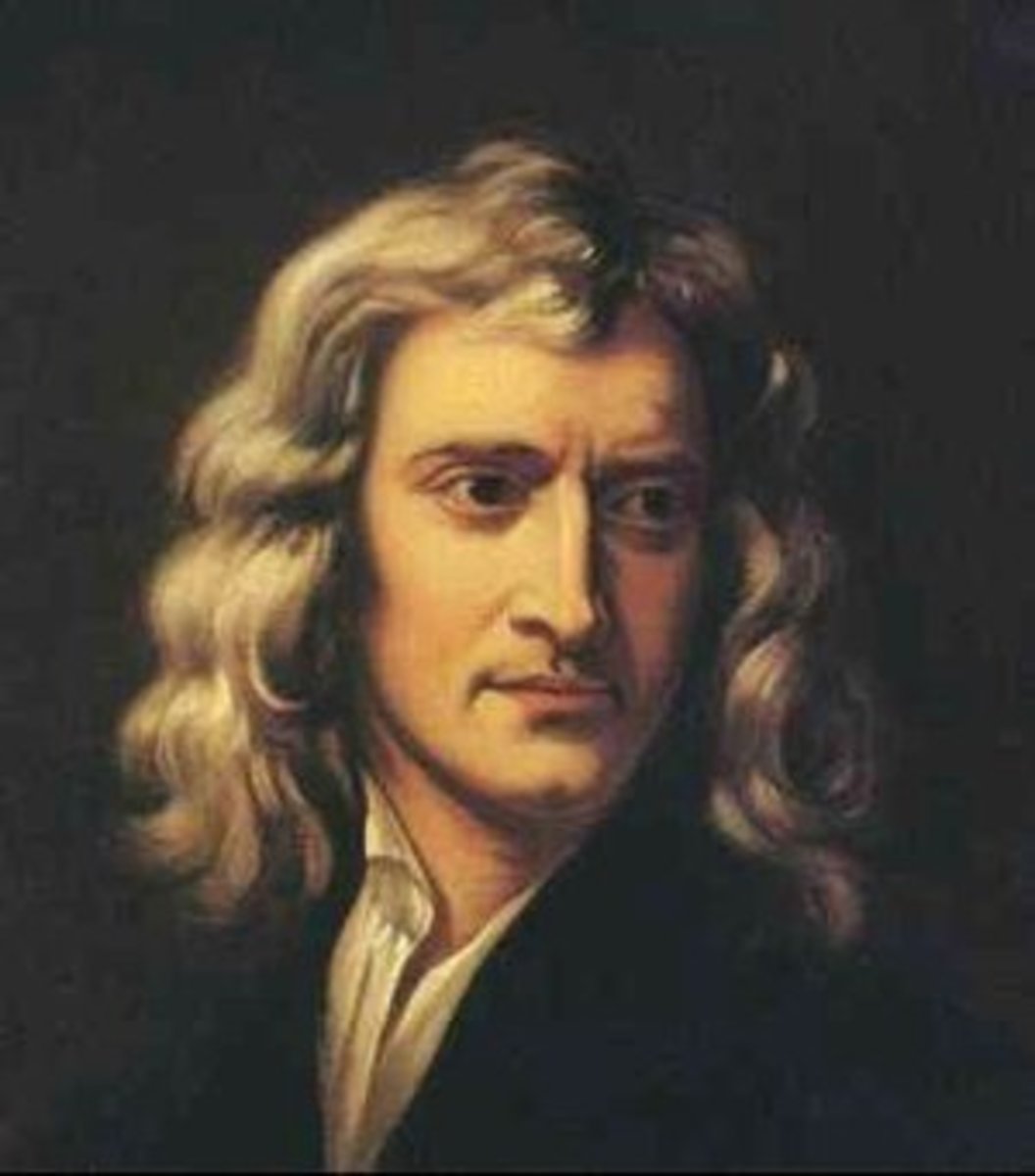The First Transistor: Bell Laboratories
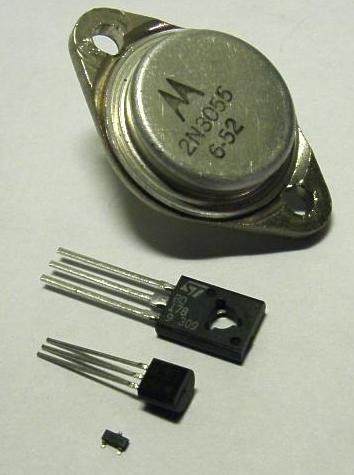
Silicon and other semiconductor materials were known in 19th century. The were no big interest in semiconductor materials. The problem with semiconductor materials is that their properties depend on their impurities. This characteristic of semiconductor materials lead to thinking that it is impossible to use semiconductors for practical needs.
Everything had changed in 1940. Russell Ohl was working in Bell Laboratories on an investigation of diode detectors suitable for high frequency microwave detection. He discovered the p-n junction, or barrier as it was called. Different impurities made some sections more resistant to electrical flow than others. The p-n junction between sections of different impurities made silicon crystal to work. He also discovered that if p-n junction is put under the light, the voltage appears on the crystal. It was the discovery of firs photovoltaic elements.
The p-n junction is the base element of semiconductor devices. The first device, which used p-n junction is photovoltaic cell. This discovery lead to creation on various Solar cells as we know now. All this is possible because of R. Ohl discovery.
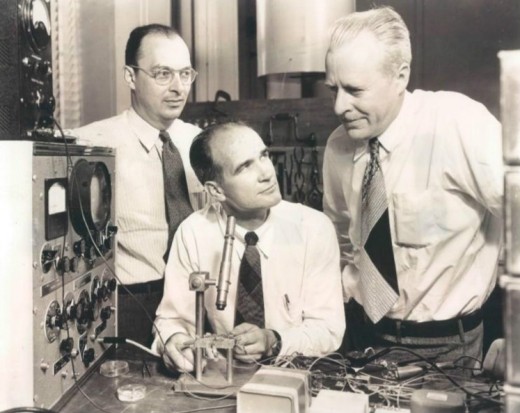
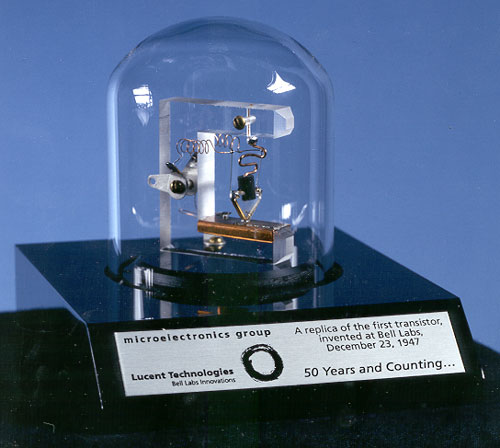
Bell Labs, W.Shockley and Silicon Valley
There should be no surprise that first transistor was invented in AT&T Bell Laboratories. This institutions was and is the strongest science institution in the world that explores new technologies. The importance of R. Ohl's invention was highly evaluated.
The scientist group started working on semiconductor research. The aim was to create a device capable to amplify electrical signals. Such a device was created in 1947. John Bardeen and Walter Brattain performed some experiments with germanium. The discovery of transistor was quite a lucky accident because scientists were working on completely different hypothesis. The accidentally connected wires to germanium crystal in such way that the device started to amplify electrical current.
The group leader at that moment was William Shockley. He was quite disappointed that he was absent at the moment of this discovery. It is known, that another great scientist, W.Carothers committed a suicide after discovery of nylon. But W.Shockley did not let this disappointment to crush himself. He locked himself in his office and after a very productive month he presented theoretical backgrounds of transistors. W.Shockley, J.Bardeen and W.Brattain were rewarded by Nobel prize for their researches on semiconductors and their discovery of the transistor effect.
W.Shockley founded a company called Shockley Semiconductor Devices. But he was quite paranoid director and his company bankrupted after some time. Some engineers, who were working for W.Shockley, decided to create their own companies. These engineers, sometimes called the "traitorous eight", were R.Noyce, G.Moore and others. Working together with Sh.Fairchild they created a company called Fairchild Semiconductor. After some time they left this company and created new companies such as Intel, National Semiconductor, Advanced Micro Devices. That is how Silicon Valley was born.
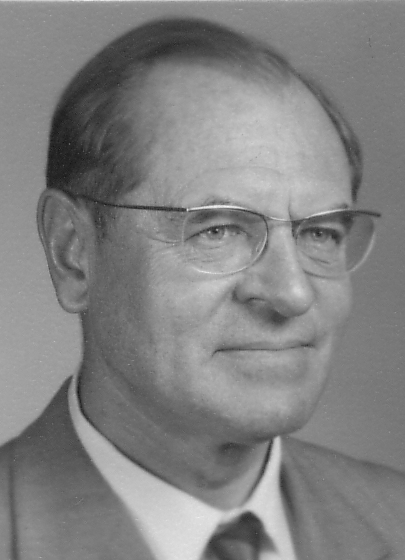
The Race for the Transistor
Did Americans really were the first who have discovered the first transistors. It is known that in Westinghouse science laboratory in Paris scientists were trying to create their own transistor. They did not know anything about researches that were held on Bell Labs. H.Matare and H.Welker in 1948 created semiconductor device that was able to amplify current. Their invention was called "le transtron". Imagine, how they should felt after they heard that American scientists had discovered the same thing just a few month ago. The works on creating and developing transistor were cut off after several years in Westinghouse lab and researches on nuclear energetics were started.
- The History of the Computer Generations
Imagine, that the firs computers filled the whole room. Now we have computers such small that they can be put in our pocket. Explore the evolution of computers and find out what technological achievements allowed computers to become as powerful as we


